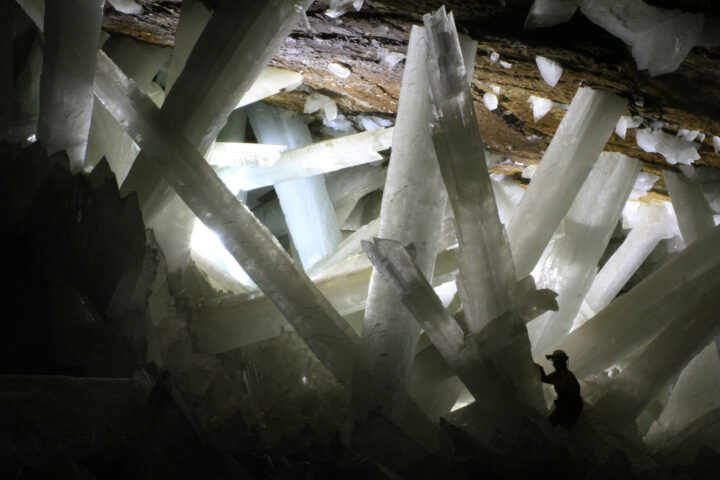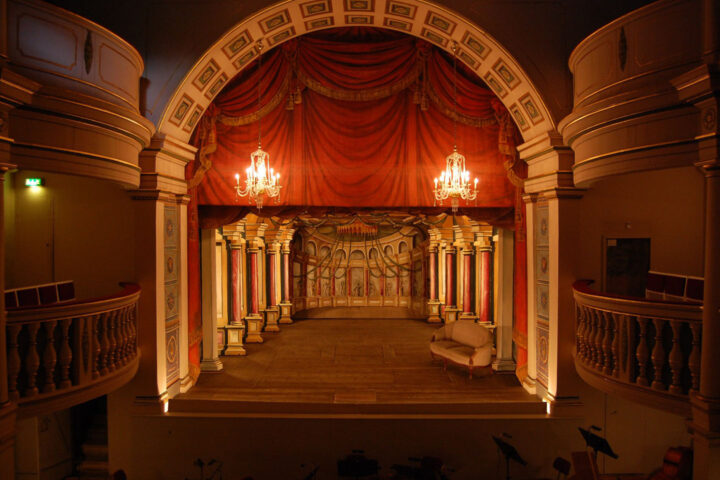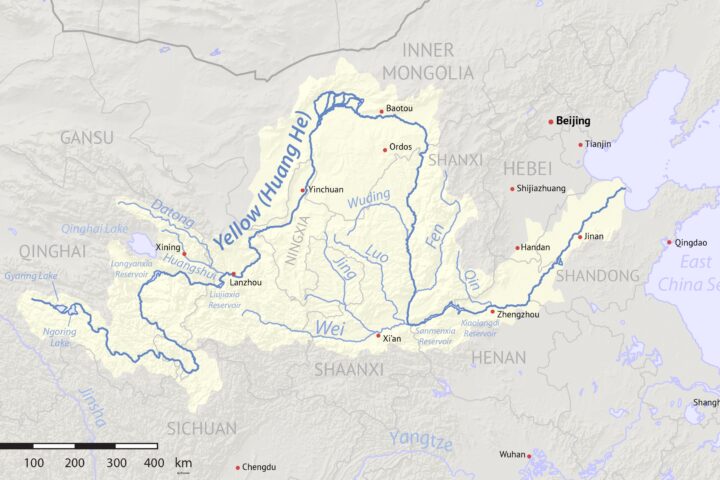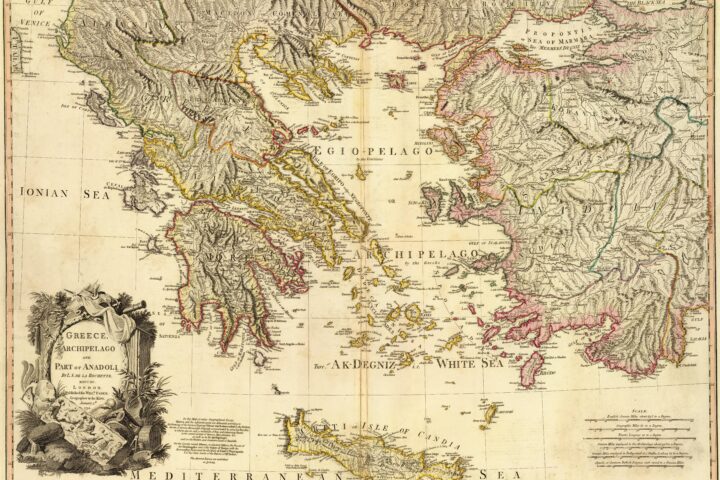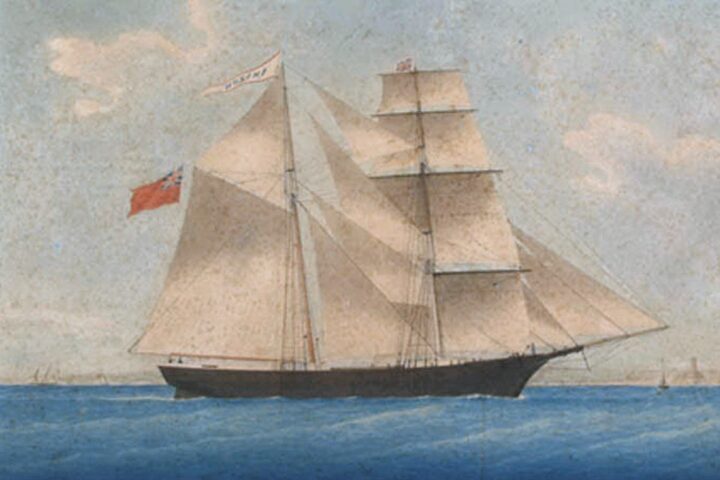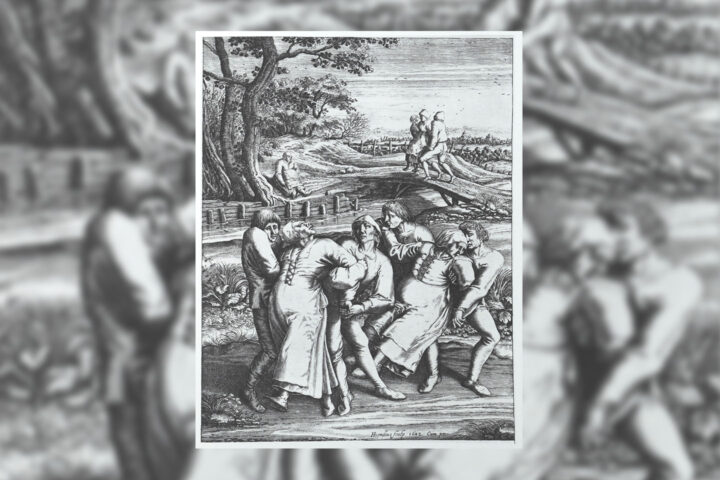Source: Wikimedia_Villahermosa,_Parque-Museo_La_Venta,_Colossal_Head_By Arian Zwegers from Brussels, Belgium – Villahermosa, Parque-Museo La Venta, Colossal Head, CC BY 2.0
The Olmec civilization, dubbed the “mother culture” of Mesoamerica, developed along the Gulf Coast of Mexico between 1400 and 400 BCE. Theirs is a name less frequently heard than the Maya or the Aztec, but their influence on the later Mesoamerican cultures cannot be overstated. Much of the later Mesoamerican cultural and religious practice, passed on through the Maya and Aztec, were really originally developed on the part of the Olmec.
The most striking Olmec art is, perhaps, the great numbers of huge stone sculptures, from their colossal heads to their 40-ton basalt carvings. The function of such colossal heads is not known, although some hypotheses include representations of rulers or deities. Very detailed precious jade objects, like masks, figurines, and ornaments just add up to it. The fact that these objects were often found as grave goods with members of the elite section of society, however, does imply that they had such an extent of value towards the representation of metaphors of status and wealth.
Besides all these great artistic works, the Olmec people were good engineers and astronomers. They could construct huge ceremonial centers, say, for example, La Venta, which showed the height of planning and layout. The astronomical experience of Olmec is proved by their astronomical observatories, and they could predict solar and lunar eclipses.
The Olmec were a highly stratified society, with a ruling elite controlling access to resources and wealth. Backing this elite class was a large class of priests, artisans, and farmers. There was also a complex religious system of the Olmec, who followed a pantheon of gods and goddesses associated with several aspects of nature and human life.
Despite all the great accomplishments, the Olmec civilization collapsed around 400 BCE. While no one knows for certain what actually caused such a collapse, a mixture of factors might have been responsible, including environmental degradation, social unrest, and war.
The Olmec Legacy
The Olmec civilization itself may have gone, but their legacy does not—instead it continues alive through the cultures that followed. Most cultural and religious practices devised by the Olmecs made their way into the hands of the Maya, Aztec, and other Mesoamerican cultures. For instance, human sacrifice to appease the gods and ensure the well-being of the community was a practice passed on to the Maya and Aztec.
When it comes to art, the Olmec were remembered most for their emphasis on monumental sculptural jade carving. Both influenced the contemporary artistic currents at the time, such as the Maya and Aztec production of colossal heads and jade masks that were direct copies of Olmec models.
In recent years, there has been a growing interest in the Olmec civilization. Archaeologists and scholars are continuing to uncover new information about their history, culture, and society. As our understanding of the Olmec deepens, we are gaining a greater appreciation for their contributions to the development of Mesoamerican civilization.
The Colossal Heads of San Lorenzo
The most representative work of art from Olmec culture is that of colossal heads, made of basalt and weighing as much as 40 tons. These two huge heads were drawn from the site of San Lorenzo in the State of Veracruz, Mexico. The heads presumably depict rulers or gods and would have been placed in some sort of ceremonial context.
The colossal heads stand as proof that this civilization held much mastery over engineering. No one has been able to discover more empirical evidence of how the colossal figures were transported to San Lorenzo, but they suggest that the massive sculptures were pushed along using wooden sledges or rollers. The Olmec was a great stone carver, and this has been evidenced by the complex and fine details depicted on the heads.
The Olmec Ball Game
Another principal aspect of the culture of the Olmecs was the game of balls. The game is played on a court in the form of an H, where a rubber ball is hit with hips, knees, or elbows. The ball game, in Olmec culture, was a religious rite of fertility and renewal.
The ball game was also a hazardous sport since at times players were injured or got killed. Sometimes the defeated team was sacrificed to the gods. The ball game was later copied by other Meso-american civilizations and it continued to practice for several centuries .
The Olmec Jade Objects
Known as great jade carvers, the Olmec produced a variety of objects made of this material, such as masks, figurines, and ornaments. In this case, jade was considered a valuable material belonging to the concepts of wealth and strength. Often, the Olmec buried jade objects along with the elite members of the community, which suggested that they were valued as displayable items of conspicuous status.
Jade objects were also sometimes used in religious rituals, such as jade masks that may have been worn by priests or shamans. The Olmec jade objects record their mastery of this artistic ability and their knowledge of the attributes of the jade utilized.
The Decline of the Olmec Civilization
Although the exact reasons for the decline of the Olmec civilization are not known, a number of factors are likely. Among the causative factors could have been environmental degradation, most possibly because the Olmecs were heavily dependent on agriculture for subsistence, hence deforestation that might have caused soil erosion and low crop yield.
Another possible explanation for the decline is social unrest. The Olmec society was very stratified in terms of hierarchy, and there were likely tensions between the ruling elites and the general populace. Warfare between rival Olmec states might have also been partly responsible for their decline.
It may finally be the case that the Olmec were simply outlasted by other Mesoamerican civilizations. There rose other dominant powers in the land, such as the Maya and Aztecs, who might have been absorbed or displaced by them.
The Olmecs and Their Contribution to Later Cultures
While the Olmec civilization was perhaps short-lived, the impact that they had on the later Mesoamerican cultures was significant. Their developments in art, architecture, religion, and exchanges were the basis on which the Maya and Aztec and many other civilizations developed.
The Olmec and the Concept of Divine Kingship
One of the contributions of the Olmec to Mesoamerican culture is the idea of divine kingship—that the divinity of the rulers and their supernatural interventions through control of the natural world or humans would guide their people. It was perhaps one of the beliefs at the very core of the Olmec worldview that helped set the mold for successive civilizations.
Olmec rulers were personified as powerful individuals in their art. They appeared adorned with elaborate headdresses and carrying ceremonial objects. Their governors received this record as a requirement to impress upon the minds of people their godliness, in other words, their divine status, and affecting their citizens with awe in their hearts.
The Olmec Calendar and Astronomical Knowledge
Also, the Olmec were well-versed in astronomy. They devised a pretty complex calendar that revolved around the sun, the moon, and the stars. Through this, one could anticipate agricultural seasons, religious festivals, and astronomical phenomena.
This later on became patterned and modified by the Mayans and the Aztecs. The Mayans were, more particularly, able to invent a mathematically accurate calendar design from that of the Olmec.
The Olmec Ball Game and its Symbolic Value
Another significant feature of Olmec culture was their ball game. Their ball game being held in the H-shaped ball court involved hitting a rubber ball with the hips, knees, or elbows. Associated with their ball game were fertility and renewal, part of the religious rituals.
The ball game was a dangerous sport, as it could lead to the death or infliction of injuries to the players. Sometimes, too, the defeated team was sacrificed to the gods. Later, copycat versions of the game spread to other Mesoamerican civilizations where it continued to be played for hundreds of years.
The Olmec and Writing
Writing is ascribed to the Olmec, though in what form is not established. Some authors think the Olmec used a mixture of logograms and pictograms to write down words and ideas.
Later, the Maya would adopt and develop the previous writing system of the Olmec, creating a complex system of hieroglyphs used to record practically anything—history, mythology, and astronomical observations.
Olmec and Trade
The Olmec were big traders who traded with other cultures within Mesoamerica. The Olmec traded in some major items such as jade, obsidian, and cacao.
Trade networks spread Olmec culture and influence to many parts of Mesoamerica. They could help in contributing to the development of new technologies and innovations to the world.
The Olmec and the Environment
Relying heavily on the environment, the Olmec knew that very well. They had sustainable agriculture practices which were sufficient to produce enough food so as to accommodate a big population.
However, an added aspect of their dependency on the environment is that the Olmecs also became vulnerable to environmental changes. For example, soil erosion, deforestation, and climate change could have accelerated the decline of the Olmec culture.
The Olmec and the Issue of Sacrifice
The Olmec engaged in human sacrifice like most other Mesoamerican cultures. Sacrifice was viewed as a required offering to the gods for the sustenance of the community and its health.
Often, human sacrifice was practiced in public ceremonies and mostly with elaborate rituals and offerings to the gods. Sometimes, sacrifices were prisoners of war, slaves, and criminals.
The Olmec and the Development of Cities
The Olmec developed a number of large cities that include San Lorenzo, La Venta, and Tres Zapotes. These cities developed as centers of political, economic, and religious power.
The Olmec cities were planned, with monumental structures in pyramids, temples, and residential areas complete with markets and ball courts.
The Olmec had their knowledge about time; they came up with a developed calendar system based on the sun, moon, and stars used to foresee agricultural seasons, religious festivals, and astral phenomena.
The Maya and Aztecs later adopted and modified the Olmec calendar. The Maya, especially, developed a very precise calendar that was influenced by the Olmec model.
Olmec and Death
The Olmecs’ concept of death was vague and very complex. They believed that it was a journey that the dead would make into an underground world where they would appear in the hands of the gods for judgment.
The Olmec routinely buried people with ritual offerings like food and drink, to more specialized material like jade objects. They constructed similar tombs for their rulers and illustrious personages.
The Olmec civilization was a very interesting, influential culture that held the key to the rise of Mesoamerican civilization. The Olmec’s innovations in art, architecture, religion, and social organization laid the groundwork for the Maya, Aztec, and other civilizations.
While the civilization of Olmec on a certain day would eventually fall, it left a legacy for the cultures to follow. Their contributions to Mesoamerican civilization always remain an important, interesting reason for scholars and the wider public.
Sources:
- https://education.nationalgeographic.org/resource/olmec-civilization/#:~:text=The%20Olmec%20Civilization%20was%20one,in%20the%20region%20in%20later
- https://www.cambridge.org/core/journals/ancient-mesoamerica/article/evolution-of-the-mesoamerican-mother-culture/B50CBB039EA8F430AD42537D31A5C267
- https://en.wikipedia.org/wiki/Olmec_influences_on_Mesoamerican_cultures
- https://www.mrdowling.com/the-olmecs-mesoamericas-mother-culture


